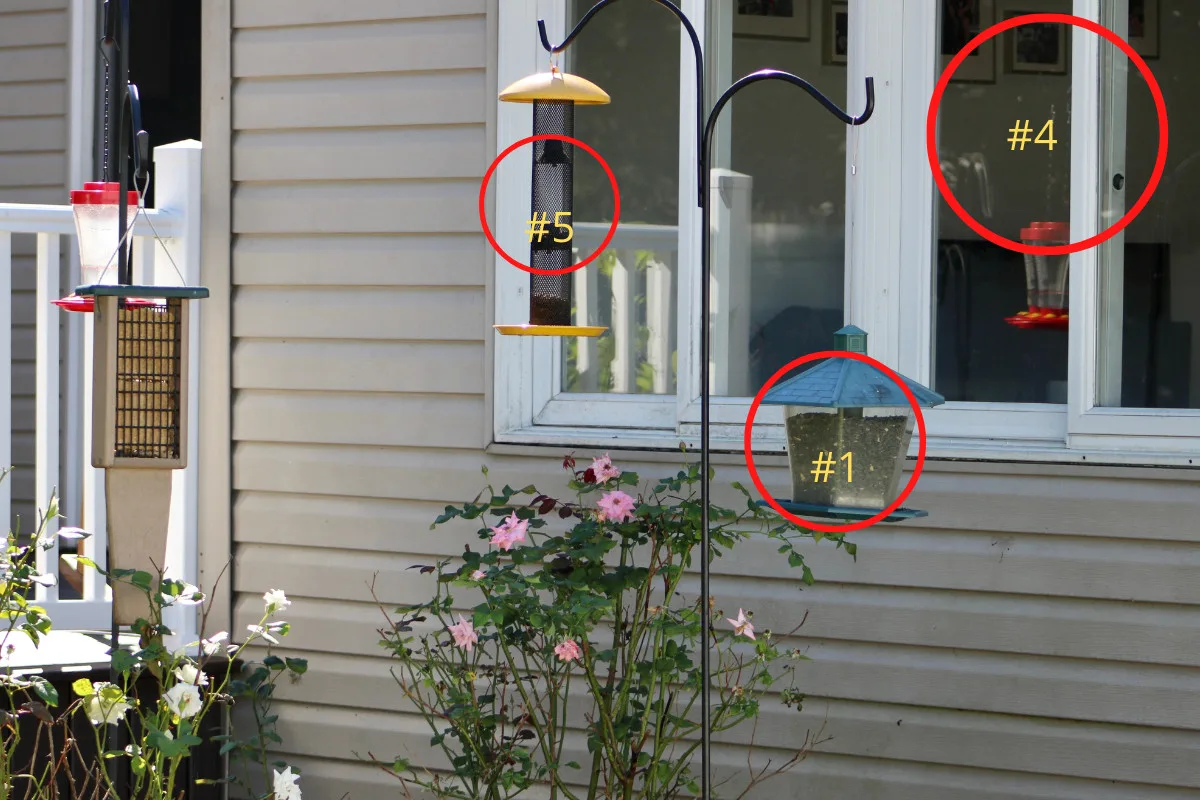
Can you automatically recall, with a shiver down your spine, the sound of an object flying straight into your living room window? The thud, followed by the drop, and the quick rush outside to see what sort of bird it was? Perhaps with the relief that it had quickly recovered and flown away, or distressed to see the poor creature still lying there.
It’s happened more than once, and it’s likely to happen again. Windows can be confusing reflective things, mostly for birds, but a clean floor-to-ceiling glass sliding door has also bewildered many a human too.
It’s said that habitat loss poses the greatest threat to birds, unfortunately, the numbers are unknown.
Luckily, there’s something you can do to prevent habitats from being destroyed, it’s called rewilding, and it’s easier than you think.
The second cause of bird related deaths is domesticated cats. On average they take down more than 2 billion birds a year! That’s the star-crossed existence of cats in nature. Not much you can do about that one, except keep your furry-friends inside, or try putting a bell on your cat’s collar.
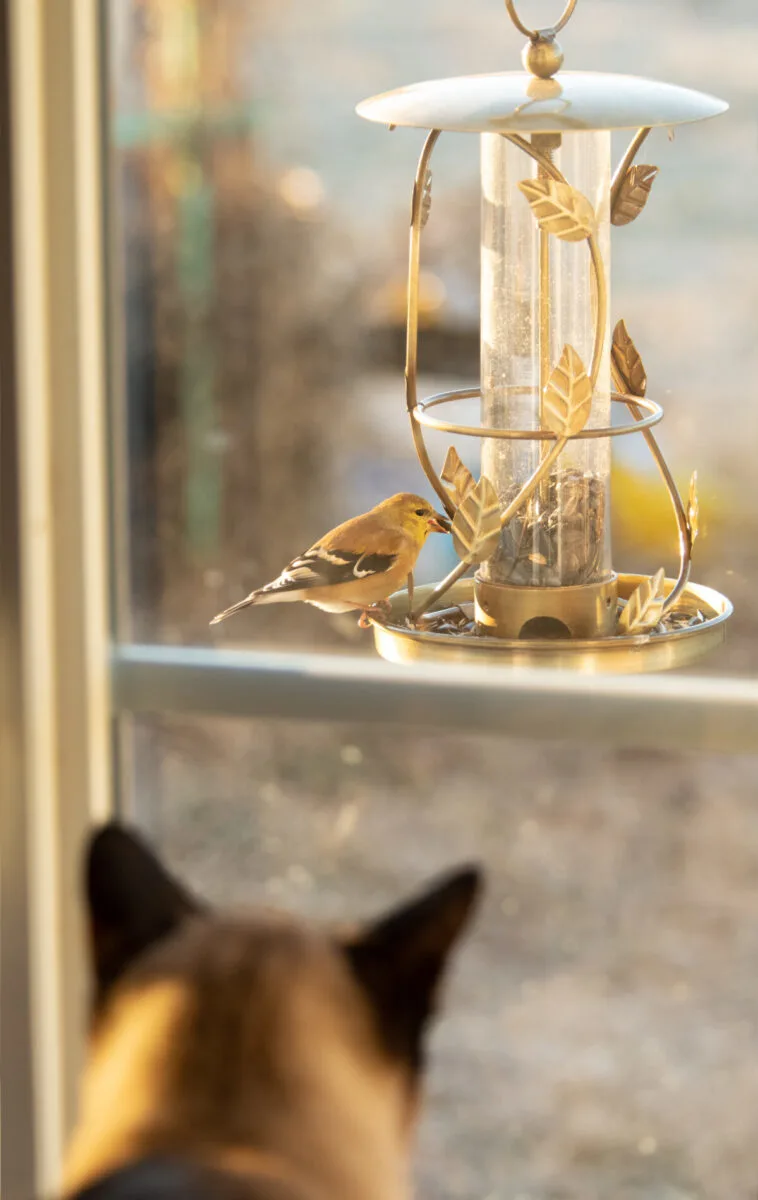
If you have cats, but also love birds, here are a few more ways you can try and stop your cat(s) from killing birds and other wildlife.
Finally, windows, are the third biggest danger to birds. About 600 million birds a year perish this way. Here, you have a variety of options on how to prevent birds from flying into your windows.
Before you take actions on blinds, stencils or engraving, let’s find out what makes birds fly into windows in the first place.
Why Birds Fly Into Windows
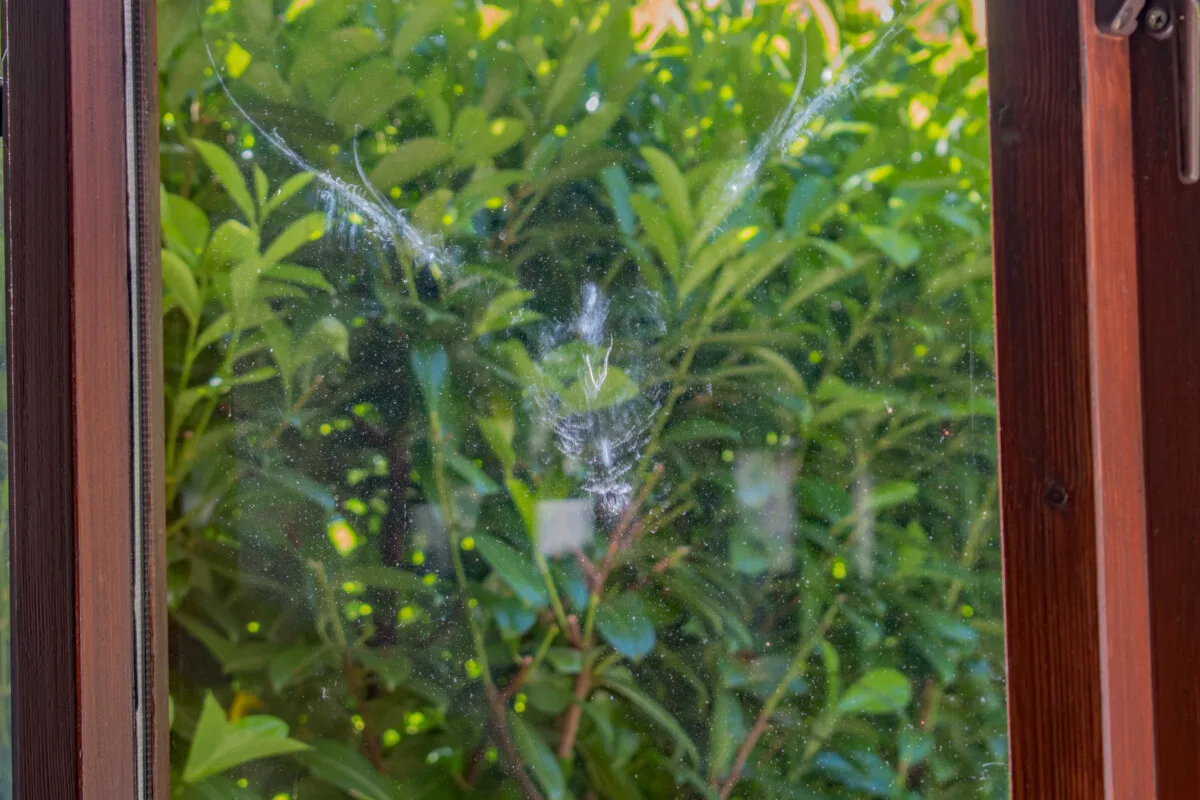
Usually it happens in the morning hours, that a sudden crash disrupts the mid-sip of your favorite brewed drink.
All too often it happens that birds accidentally fly into windows because they see confusing trees, branches, bushes, etc. in the reflection. They may also see your vast array of potted houseplants through the glass.
Sometimes that dreaded crash also happens in the evening hours when the lights are on. This is when nocturnal migrants tend to fly into the window in a confused state.
There are far too many windows in the world to go about condemning them. And there’s no good reason to put the blame on either side of the glass. So, what can you do about it?
Well, for starters, if you are actively attracting birds into your yard, try and find the best possible place for the bird feeders. While it’s fun to watch birds from the window, a feeder right next to the window probably isn’t the best location. Be careful not to make these other bird feeding mistakes.
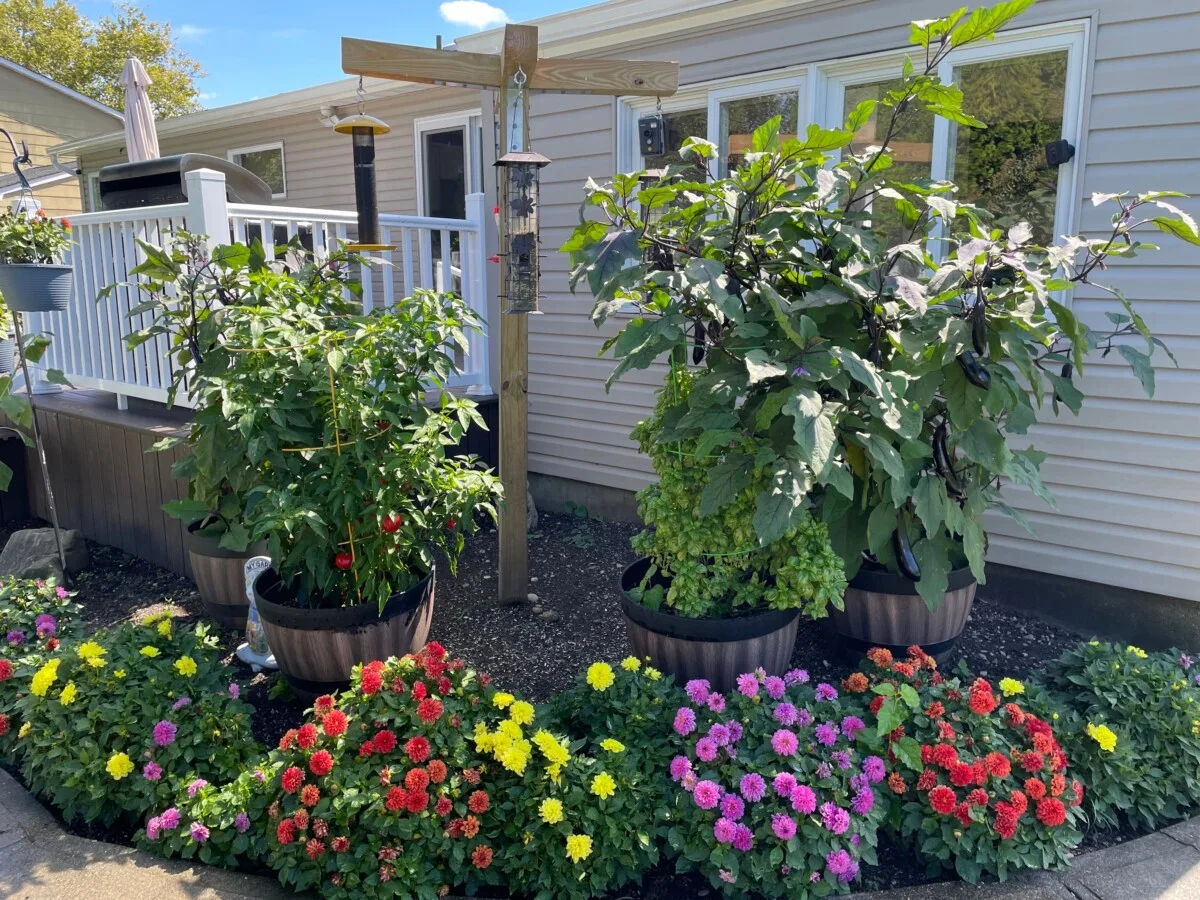
Outside of that, there are several ways to make your invisible or reflective windows visible to birds.
What Do You See From Outside?
In order to find out what birds might be seeing, it’s wise advice to step outside your own home at different times of day to check the reflections that occur in morning or afternoon light.
If you see branches, birds will see branches.
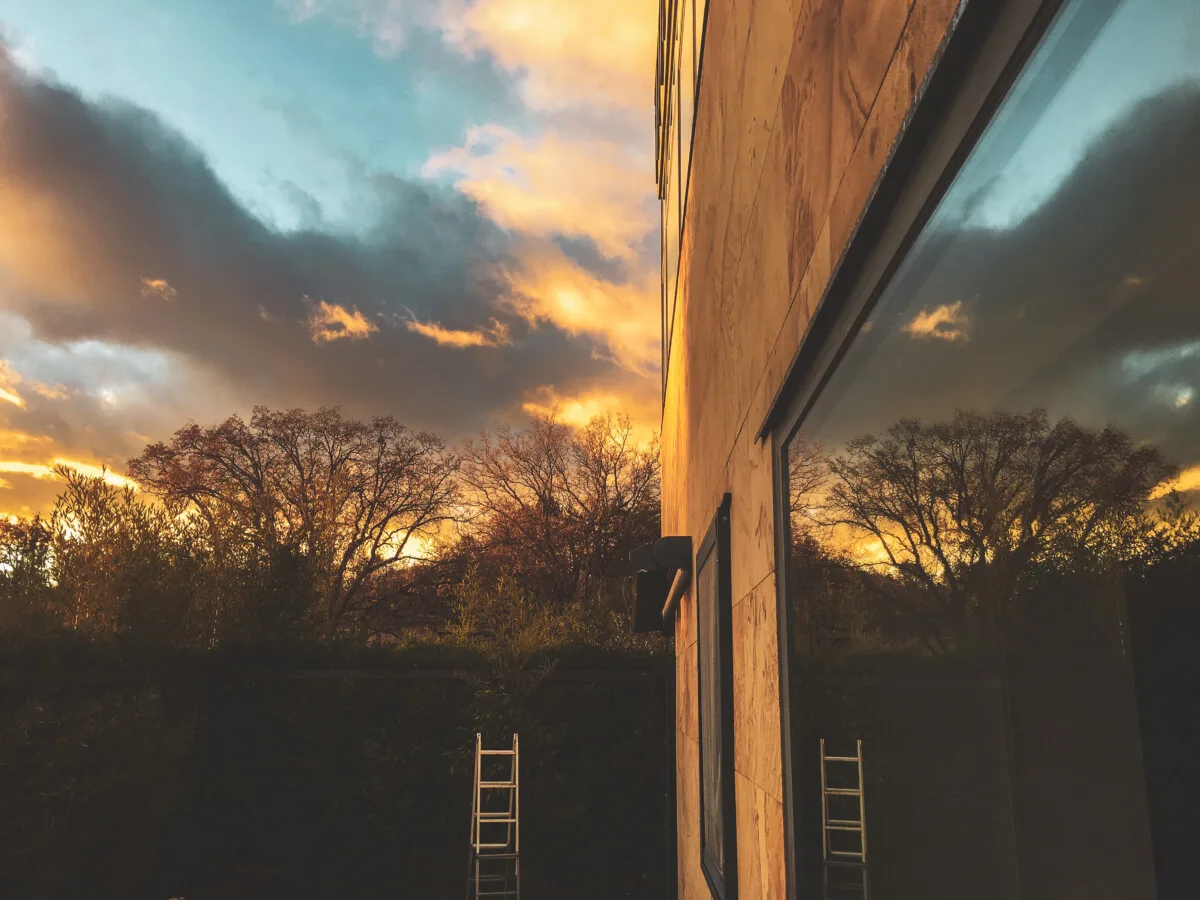
If you see yourself, they will also see their own bird image. Although rare, some birds will attack their own reflection, believing it to be another bird. This often happens when they are vying for territory. Luckily, this seldom hurts the bird and they can easily fly away.
In spring, it often happens that swallows, searching for a safe place to nest, sweep into our home.
They enter either through the front door or windows as we are refreshing the air. If we give them a few minutes, they often find their way out, but not always. In panic mode, they may hit the window repeatedly from the inside.
In that case, we turn off the lights and my husband catches a single swallow with a towel and releases them back outside to search for a new home.
It’s happened with bats before as well, that they flew right in through our open door in early morning and circulated around the room for a couple of minutes. It took them some moments to realize how to leave.
The point is, an open door can be an invitation, just as much as a freshly washed window can be. When you see it from another perspective, it opens up all new possibilities.
How to Prevent Birds Flying Into Windows
If you have windows which are notorious for birds flying into them at a certain time of day or a particular time of year, be sure to note those times in the back of your mind. Maybe you can help prevent bird collisions by employing a few of the following tactics.
Note that birds often experience this confusion in spring and fall, during their mating and migrating seasons. So, it may be the case that some solutions need only be used for parts of the year.
1. Decals
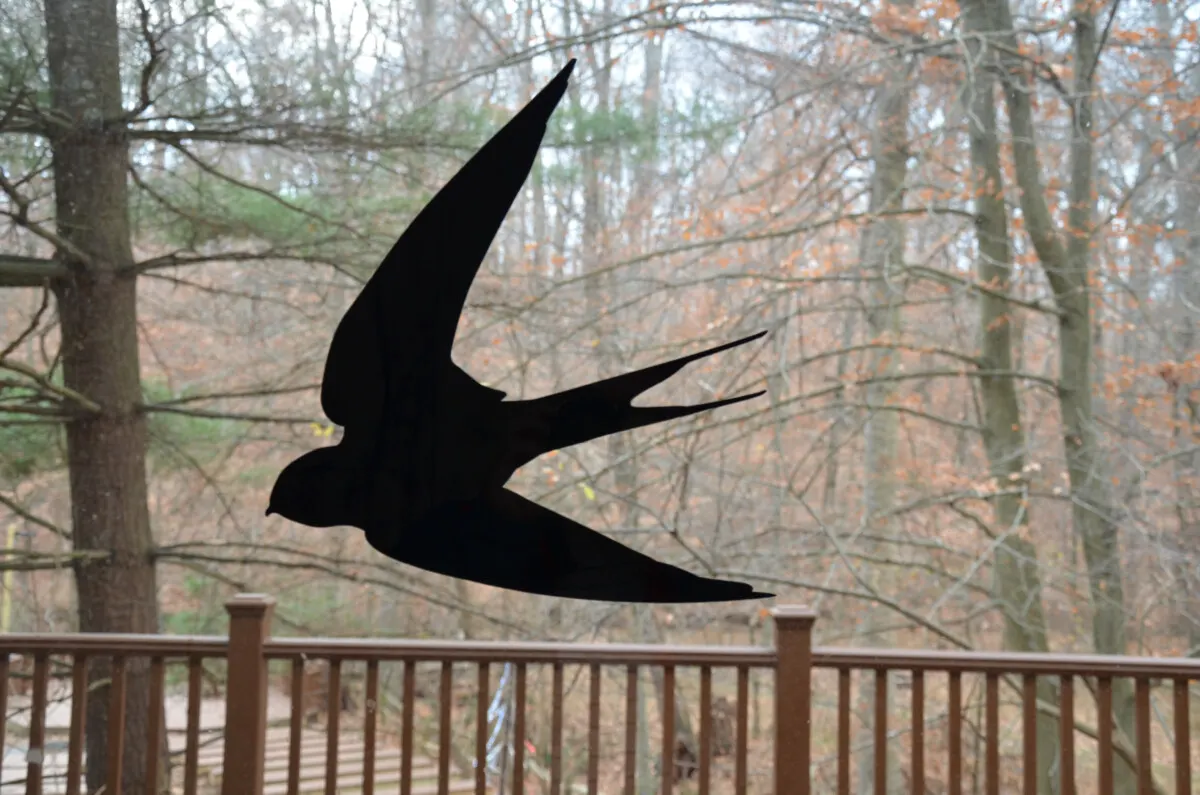
One of the easiest and cheapest ways to break up reflections on your windows is through the use of decals. These most often come in the form of large black birds in a flight position. Though you can also find leaves, snowflakes, circles, just about anything you can imagine to dress up your windows.
These decals should be used on the outside of the window.
You can purchase unobtrusive bird-deflecting decals online or in hardware and gardening stores. Heck, you can even make your own window decals in any shape, color or size that you choose to help migrating birds not fly into your windows.

The downfall with decals, is that you may need a lot of them to prevent bird-to-window collisions, as birds may still try to fly through larger gaps. It all depends on the size of your windows.
2. Tape
If you have a lot of large window surfaces, or even a glass-walled balcony, perhaps it’s not decals of birds you are after, rather a textured tape that can be extended vertically.
There are collision-proof tapes, which make glass surfaces visible to birds, without obstructing your view. Here’s how you can install it.
3. Mosquito Screens or Netting
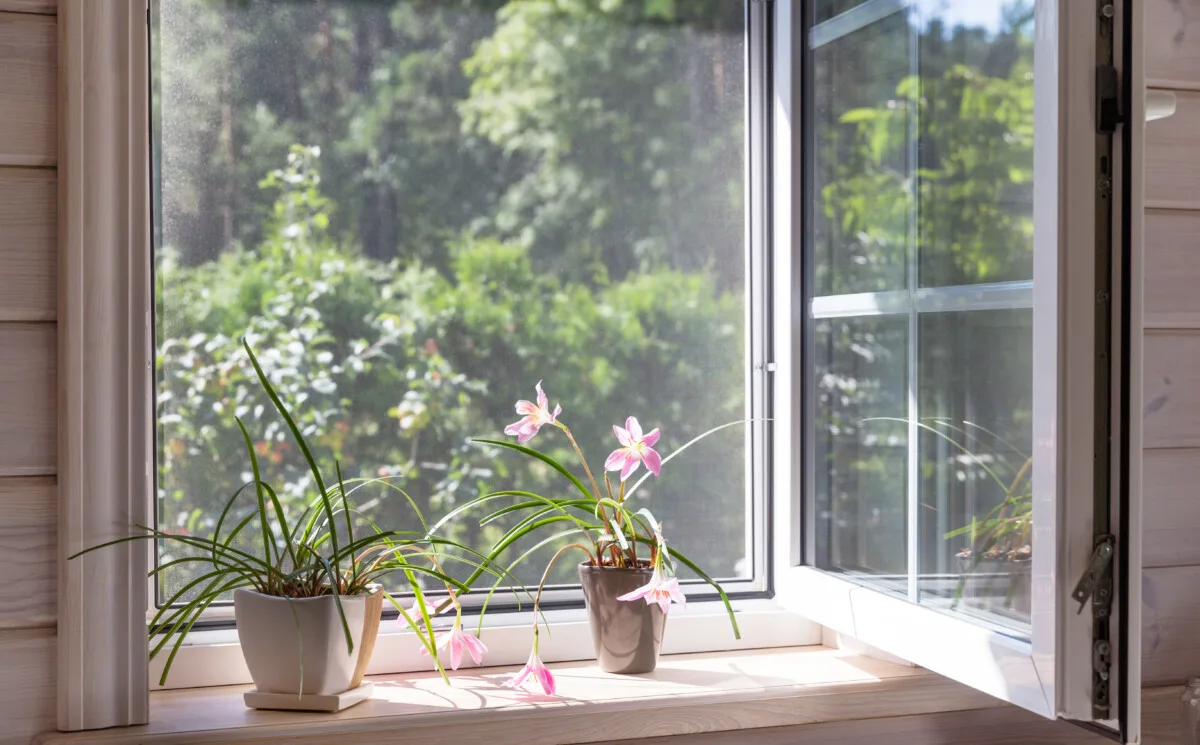
Again, not all windows need screens. Certainly where we live in Romania it would be more of a burden than a blessing, given the low number of mosquitoes. However, I’m originally from the Midwest and cannot imagine keeping windows open all night without something to keep the bugs from flying or crawling in.
Birds that hit screens or other netting are less likely to suffer damage. So, if your climate calls for mosquito netting, by all means accept it as a form of preventing bird collisions. Screens by themselves will already minimize reflections.
4. Washable Tempera Paint or Soap
If you are a true DIY-er, this one is for you. Make any pattern you want with a dry bar of soap on your windows, just be sure to not leave gaps wider than 2″.
Get creative with painting, making brush marks with washable tempera paint on your windows. It’s fun, easy and crafty. Be sure to come up with a design you don’t mind sharing with your neighbors or passersby.
5. Etched or Sandblasted Windows
Now, that we’ve covered a handful of low-cost or free options, let’s look at one that’s more of a long-term investment. Since most of us don’t have the tools to etch glass ourselves, this is one you are going to have to outsource, but maybe you can still put some of your own artistic thoughts into the process.
Etched glass not only helps to prevent birds from flying into your windows, it can also be a source of privacy and decoration all in one.
6. Transparent Film
Several companies make privacy films and plastic-etched window deflectors. Some are transparent from inside your home, whereas others are not.
Basically, they are decals that cover larger portions of your window. They can be whimsical, featuring a practical design, or both. Shop around to find what best suits your windows and your style. After all, it’s still mostly you looking at your windows, not the birds.
Remember, all you are trying to do here, is to break up a potential flight pattern. Minimal work and materials, along with a little common sense is all that is needed.
7. External Shutters
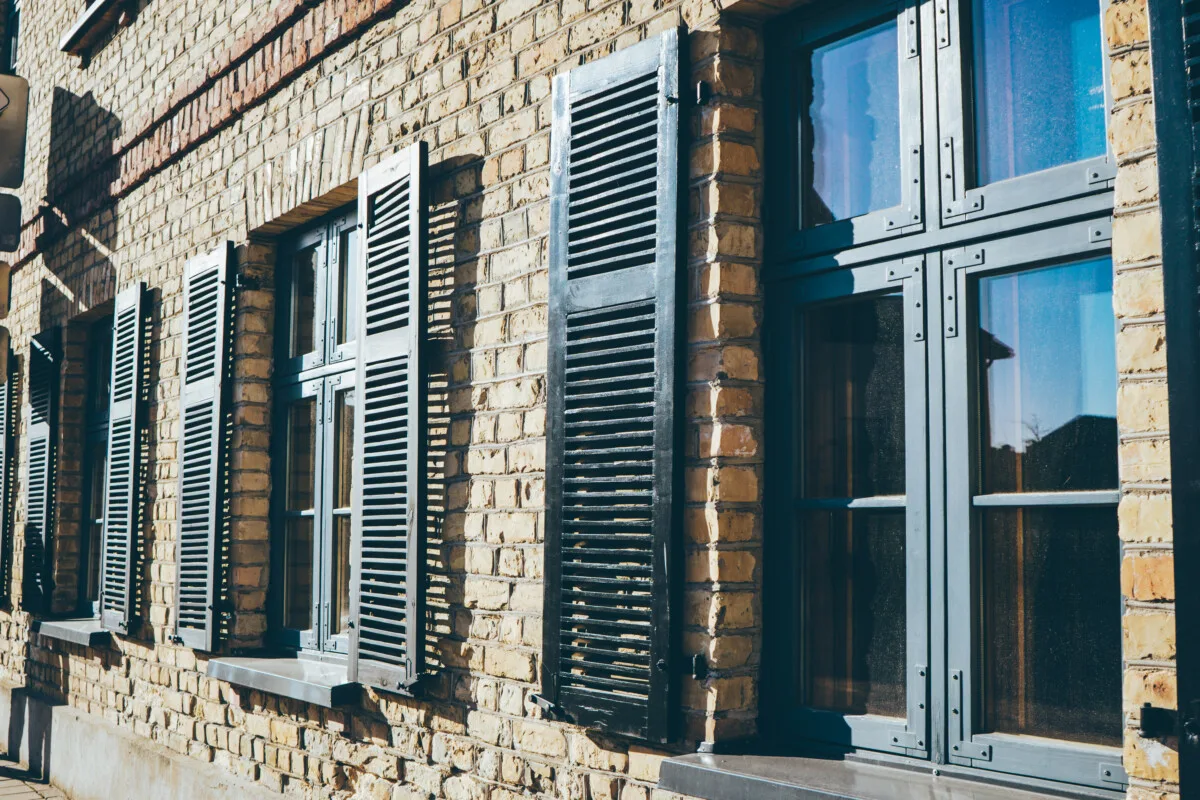
Not every home has shutters, though if you are fortunate enough to have them, use them. When they are closed, not only will they prevent birds from colliding into glass panes, they’ll also help you sleep better at night by blocking external light. Plus, shutters may even help you keep your home warmer in winter.
8. Vertical Blinds
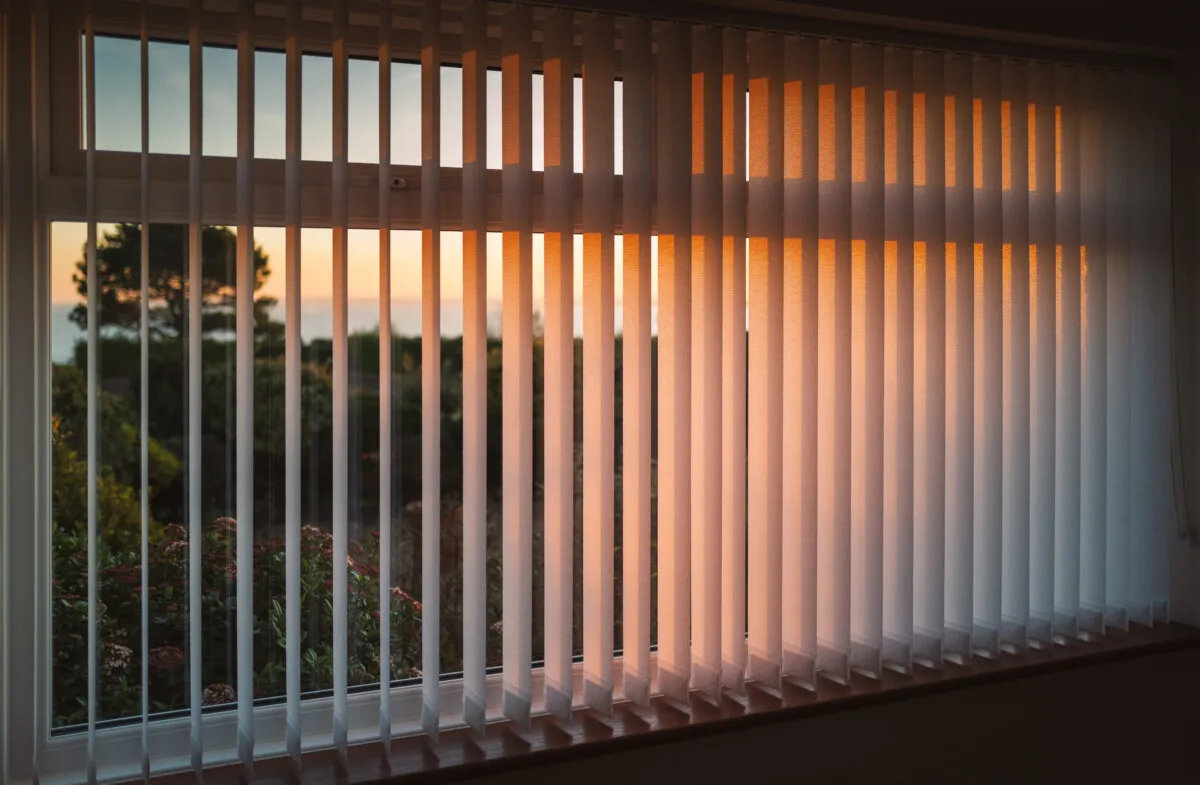
Anytime you can break up the surface of the window, go ahead and do it for the birds. Vertical blinds can be turned in a way that lets light in, at the same time breaking up the outside reflections.
Always be sure to close your blinds or curtains when you don’t need to let daylight in. By all means, close them at night so you don’t let light pollution out.
9. External Shades or Awnings
Most windows are equipped with some set of blinds or curtains, though you may want those open to let in sunlight at the same time when birds are flying. Based on prior bird-striking history, you may then want to opt for a sun shade or awning, on those windows which are most frequently hit.
These shading devices will almost entirely eliminate any reflection of sunlight. That, in combination with potted flowers on the edge of a balcony, will surely prevent any birds from flying directly into the windows.
How to Help a Bird That’s Hit a Window
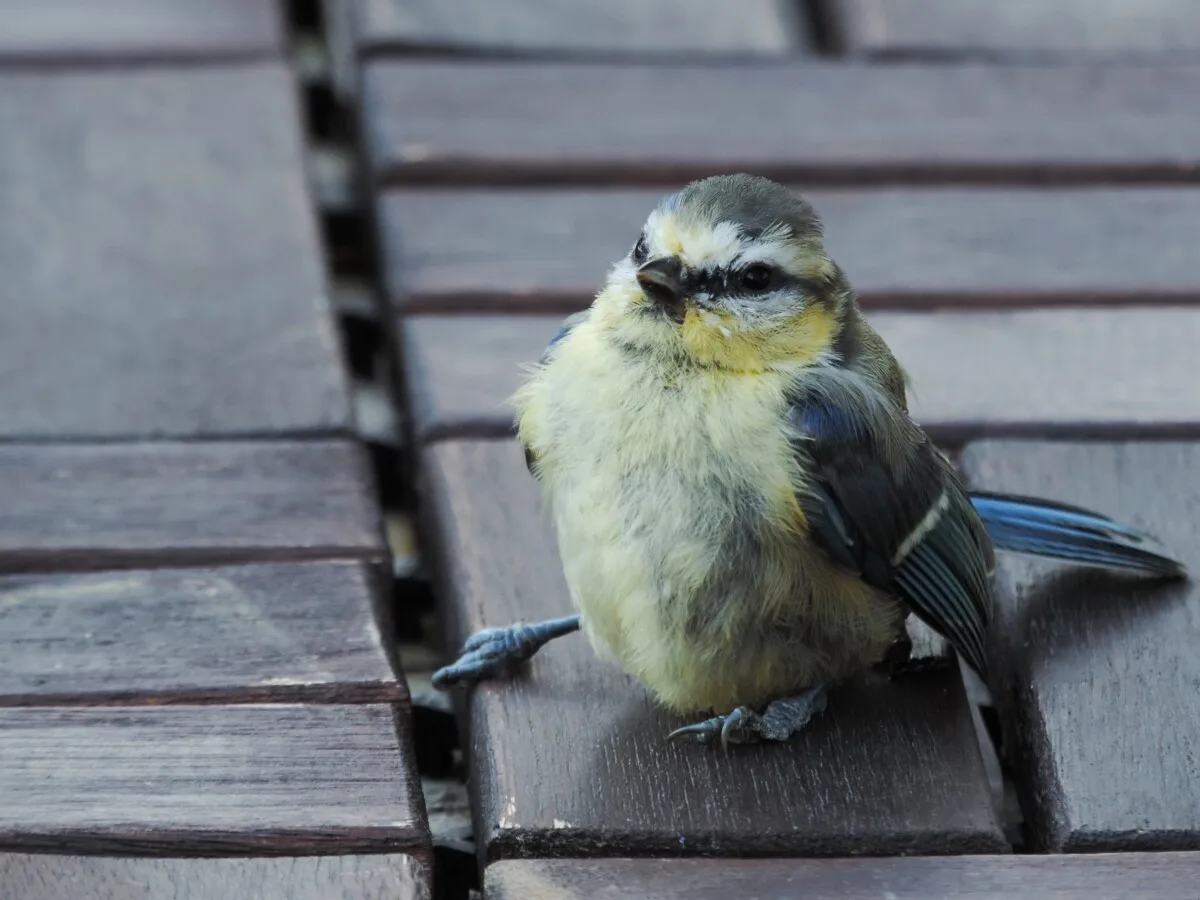
If you do happen to encounter a bird that’s flown into your window, approach it slowly. Often times it’s dazed and confused, in need of a few moments to shake off the temporarily stunned feeling. If it appears okay, give it some time to fly off on its own.
However, if the bird seems to have taken more of a severe hit, visually check for signs of movement before attempting to touch it.
If it is alive, yet not moving, place it gently in a small box (with gloved hands or with the use of a towel), along with several air holes. Make if comfy by adding grass or a clean cloth. Allow the bird to rest in the safety of the box, checking on it every half hour or so.
When the bird recovers, this may take a few minutes up to two or three hours, remove the lid (outside) and allow it to fly away. If it doesn’t, go ahead and contact a wildlife rehabilitator.
Never offer food or water to an injured bird, refrain from giving it any kind of medication and never release a bird inside while trying to check its progress.
Rather then dwelling on past bird collisions, think about how you can prevent them in the future, then take actions to do so.
Read Next:

Get the famous Rural Sprout newsletter delivered to your inbox.
Including Sunday musings from our editor, Tracey, as well as “What’s Up Wednesday” our roundup of what’s in season and new article updates and alerts.


